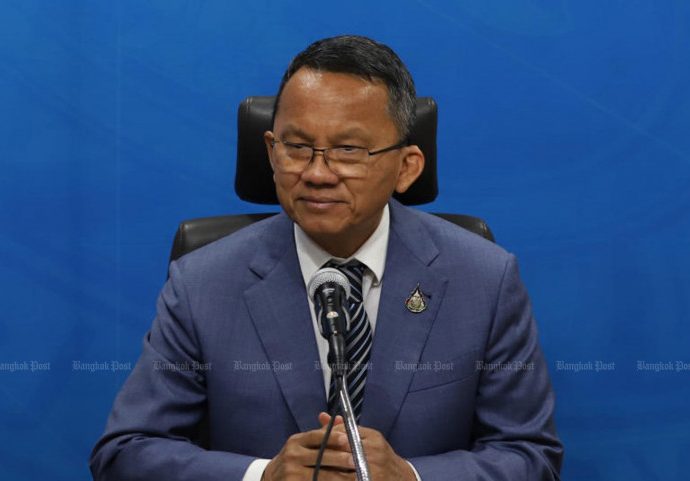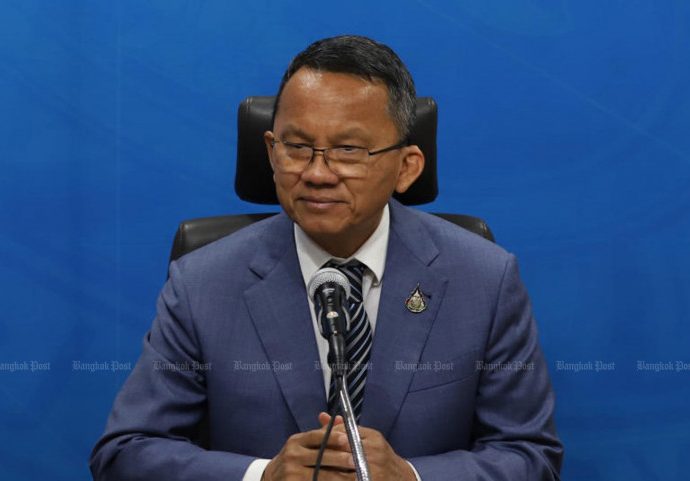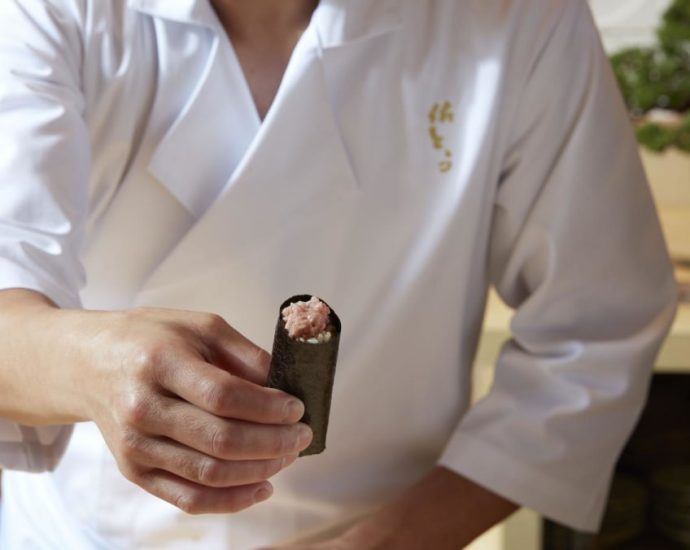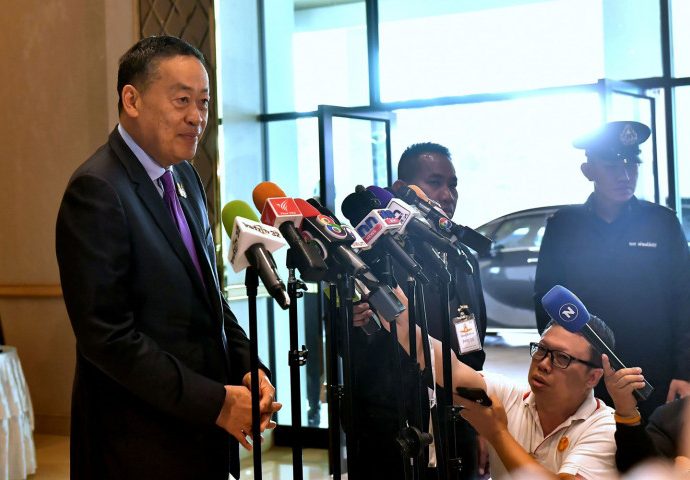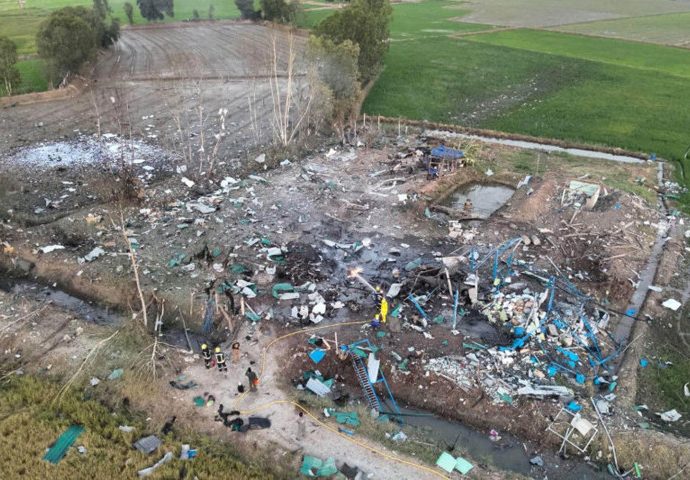Apocalypse too soon – Asia Times
Customer help desks are a top target of money-saving schemes involving generative AI, as I reported earlier in an attempted takedown of the chatbot. Now I’m convinced that automating customer service will bring the apocalypse somewhat nearer, not because machines will become sentient, but because the machines turn perfectly normal human beings into morons.
It started when a family member included in my T-Mobile plan lost a handset. It happens.
Each month I fork over $18 to T-Mobile’s partner Assurant for handset protection, so I clicked on Assurant’s website to file a claim. But the website went into an infinite loop: To file a claim, the site demanded a one-time password sent to the handset in question, which is the handset that was lost, and therefore couldn’t receive a one-time password or anything else.
Use another handset from the same account to get the oneoo-time passwor, Assurant’s convenient pop-chat function told me. I should have known better. ChatBots make things up, as a couple of New York lawyers discovered when their AI-generated legal brief presented cases that didn’t exist. The same thing can happen with help desks.
Stupidly, I did as instructed. But Assurant’s system assumed that the lost handset needing tobe replaced was the one that had received the one-time password, namely my own handset. After I forked over a $250 deductible, Assurant promptly sent out a replacement for my handset, a venerable Samsung device that had worked uncomplainingly for years and remained comfortably nestled in my shirt pocket.
Once I was in receipt of the wrong replacement handset, I called Assurant customer service and explained the error (it was Assurant’s error, not mine). I returned the handset with the next UPS pickup. Assurant apologized for the error, and took a second $250 deductible to replace the handset that actually had been lost, promising to refund my first $250 deductible when the first replacement handset arrived.
In due course, the correct replacement handset arrived, and all seemed well, except for the deductibles, of course.
But I was unaware that the unquiet spirit of Franz Kafka had quietly possessed the soul of T-Mobile and Assurant customer service.
My handset stopped connecting to the network in the middle of a weekday afternoon, ten days after my initial encounter with the Catch-22 on Assurant’s website. I was traveling and between meetings. I had a backup phone (I’m the sort of Airport Dad who always has a backup) and I spent two hours on the line with T-Mobile customer service until someone figured out that Assurant, not T-Mobile, had blocked the SIM card on my handset, because it had been reported lost.
It never was reported lost – its only offense was to receive a one-time password – and Assurant customer service had known of its error for ten days. But the misinformation had worked its way through the system over those days.
At length I talked to someone at Assurant, who said that it would take one business day, or maybe one to three business days, to unblock my SIM card. I begged, cajoled and threatened the Assurant tech as well as her supervisor, to no avail. The phone still isn’t working.
Fortunately, most of my friends have stopped using cell phone connections in favor of encrypted messaging apps, and these apps run on WiFi. I can turn on the data hotspot on my backup phone and use the messaging apps on my handset with the still-blocked SIM Card.
A supervisor finally took my call at T-Mobile. I asked her if I could record the call (which T-Mobile says it does whenever you call them). She hung up. Her AI system probably flashed, “Abort! Abort!”
If you’ve been trying to call me on my regular line, and I haven’t answered, now you know why.
T-Mobile, Verizon and AT&T cost a lot more than the discounters. What you pay for is superior customer service, which means a lot in an emergency. But as AI systems metastasize through customer service departments, the advantage disappears. If you’re going to be mistreated by a machine, might as well pay less for the privilege.
Power of Siberia 2 stuck on gas price, branch issues – Asia Times
Beijing has kept progress of the discussion about building a new gas pipeline from Russia to China slow, as issues such as the gas price, a proposed new branch and a potential partnership in downstream businesses still linger.
The feasibility study of the “Power of Siberia 2” project, designed to deliver 50 billion cubic meters (bcm) of natural gas from Russia to China annually, was approved by Russia’s Gazprom in 2021. Both sides reportedly achieved a consensus in principle last month.
While Moscow hopes to close the deal in the first quarter of this year, Beijing has so far adopted a wait-and-see approach in order to increase its bargaining chips at the negotiation table.
Chinese commentators say China wants the Russian side to “show more sincerity.” They add that Russia needs money to fund its battles in Ukraine – but China is not in a hurry to strike a deal; it has other options to diversify its energy supply.
“Although heads of the Chinese and Russian governments met in Beijing in December and discussed how to push forward an agreement for the Power of Siberia 2, it’s not easy to implement what was discussed,” a Shanxi-based columnist using the pen name of “Song Jun“ writes in an article published earlier this month.
“The two sides reached a consensus in principle but they still need to discuss the gas prices, delivery and payment methods,” he says. “Before signing a contract, they will have to resolve a lot of operational problems and find solutions to fulfill their own needs, market positions and economic benefits.”
”Although Russia urgently needs money and has a good relationship with China, Beijing will not allow the Russian side to set the gas price freely,” Jiang Fuwei, a Hainan-based columnist, says in an article.
“China and Russia will eventually make agreements on all the operational issues such as gas price and payment method. The question is which side will compromise,” Jiang says. “For this matter, China has an advantage.”
He says Russian oil and gas supply is very important to China’s energy security as the Chinese maritime routes are facing some external threats. However, he adds that China will not put all its eggs in one basket.
He says China has already been importing gas from Turkmenistan and is seeking to get fossil fuels from the Gulf through a new trade route passing through Pakistan.
He says the fact that Russian President Vladimir Putin held a meeting with Gazprom Chief Executive Alexey Miller on December 26, lasting until 2 am, showed that the Russian side could not wait any more. He says it’s still possible that China and Russia can sign a sale agreement in Spring 2024.

“Over the past two months, the Russian side has reported three times that the existing Power of Siberia’s daily gas supply recorded high,” an associate professor at the Sichuan University using the pen name “Qianli Ke” writes in an article published on December 25. “Russians closely monitor the figures and treat them as news because they want to push forward the Power of Siberia 2 project.”
“Someone said the matter is not only about gas price but may be related to Mongolia. As far as I know, Russia wants the pipeline to pass through Mongolia but China has concerns,” he says.
“Putin should understand that no matter how good Sino-Russia relations are, he must show more sincerity,” he says. “Otherwise, there is no other way to move forward.”
A new branch
In December 2019, Russia started supplying natural gas to China’s northeastern region through the original 3,000 kilometer Power of Siberia gas pipeline, which can deliver 38 billion cubic meters of gas to China annually.
China and Russia then started discussing the 2,800 km Power of Siberia 2 project, which was set to begin construction in 2024 and be completed in 2029.
Beijing wanted the gas to be sent directly from Russia to northwest China’s Xinjiang province but Moscow said building such a pipeline, which passes through the hilly areas of its Tuva Republic region, is more expensive than having a route via Mongolia.
Despite Beijing’s concerns that Mongolia may lean towards the United States one day, Russia kept pushing for a pipeline that passes through the landlocked nation, which was a part of the Qing empire before 1911.
After Mongolia signed an “open skies” agreement and proposed a rare-earth partnership with the US last August, China suggested that Russia build an extra branch for the Power of Siberia 2.
The Russian side seemed to have listened to Beijing’s request. On September 6, Russian Deputy Prime Minister Alexander Novak wrote in an article for the Energy Policy magazine that a 700-kilometer-long branch from Naushki to Ulan-Ude and then to Chita is under review.
He said the main pipeline will pass near cities of Achinsk, Krasnoyarsk, Kansk, Sayansk, Angarsk and Irkutsk and then over the territory of the Republic of Buryatia (to the south of Lake Baikal) until reaching the Russian-Mongolia border in the vicinity of Naushki settlement.

“The establishment of a branch was suggested by the Chinese side,” a Shandong-based writer says in an article published last September. “Firstly, it can save costs. Secondly, it can ease security concerns. A pipeline passing through Mongolia really makes China feel not so reassured.”
“After reaching Chita, the gas supply can directly enter China without passing through Mongolia. And there is a railway connecting Chita and China’s Manzhouli,” he says.
“At present, Russia’s special military operations in Ukraine are ongoing and spending a huge amount of resources and money on a daily basis,” he says. “It is urgent for Russia to close its natural gas deal with China as soon as possible to ensure a stable income.”
A Zhejiang-based commentator called “Guoba Ge” says the branch will reach Hulin in China’s Heilongjiang province. But he does not elaborate.
Downstream businesses
When Putin and Chinese President Xi Jinping met in Beijing on October 19, they discussed the Power of Siberia 2 but did not sign any agreement. Both sides said they wanted to achieve some real progress.
On December 19, Zhang Hanhui, Chinese Ambassador to Russia, told Russian news outlet RT that companies from both sides are actively negotiating technical, business and cooperation issues for the Power of Siberia 2 and need thorough justification, scientific and systematic, in order to implement the megaproject.
“China consistently advocates an upstream-and-downstream-integrated approach for the Power of Siberia 2 project,” he said. “This is due to the desire not only to extend cooperation from trade to the entire production chain, but also to build a more long-term and sustainable model of cooperation with Russia.”
Zhang’s comments were followed by a meeting between Russian Prime Minister Mikhail Mishustin and Xi in Beijing on December 20 and another between Putin and Miller in St. Petersburg on December 26.

Russian Deputy Prime Minister Alexander Novak said on December 27 that Gazprom and China National Petroleum Corporation (CNPC) reached an agreement in principle to implement the project and were finalizing the commercial terms, including the gas price, terms of supplies and payment methods. Beijing has so far remained tight-lipped about the negotiation.
Russia is now selling its natural gas to China for US$271.6 per thousand cubic meters and to Europe and Turkey for US$481.7.
Read: US-Mongolia aviation pact as a rare earths hedge
Follow Jeff Pao on Twitter at @jeffpao3
Fireworks factory rules to be revised
PUBLISHED : 20 Jan 2024 at 06:03

Deputy Prime Minister Somsak Thepsutin has told five ministries to revise their rules for controlling fireworks factories in the wake of an explosion at a Suphan Buri factory that killed 23 people on Wednesday.
Mr Somsak held a press conference on Friday at Government House alongside the permanent secretary of the Ministry of Industry, Nattapol Rangsitpol, and the deputy director-general of the Department of Provincial Administration, Somchai Lersprasittipan following a meeting about compensation for the Suphan Buri explosion.
The meeting also looked at developing further regulatory guidelines for fireworks sales and production.
Mr Somsak said regulations for fireworks factories fall under the responsibility of five ministries — the Ministry of Defense, Ministry of Interior, Ministry of Public Health, Ministry of Labour and Ministry of Industry — and they should all be revised.
As part of that, he said the Ministry of Industry had been told to draft a bill to better regulate small-scale fireworks factories that employ less than 50 people.
The ministry is required to report back to Mr Somsak within 10 days, with the report to be later submitted to Prime Minister Srettha Thavisin for consideration.
The meeting also wanted to include a regulation that fireworks factories must provide their workers with life insurance.
The matter will be later discussed between the Ministry of Labour and the Ministry of Commerce, he said.
Mr Nattapol, the Permanent Secretary of the Ministry of Industry, proposed that fireworks factories have separate locations for production and storage out of safety concerns.
Regarding compensation for 17 families who lost their loved ones in the Suphan Buri explosion, Mr Somsak said it would be offered to them after the victims’ death certificates were issued.
Firework factory rules to be revised
PUBLISHED : 20 Jan 2024 at 06:03

Deputy Prime Minister Somsak Thepsutin has told five ministries to revise their rules for controlling fireworks factories in the wake of an explosion at a Suphan Buri factory that killed 23 people on Wednesday.
Mr Somsak held a press conference on Friday at Government House alongside the permanent secretary of the Ministry of Industry, Nattapol Rangsitpol, and the deputy director-general of the Department of Provincial Administration, Somchai Lersprasittipan following a meeting about compensation for the Suphan Buri explosion.
The meeting also looked at developing further regulatory guidelines for fireworks sales and production.
Mr Somsak said regulations for fireworks factories fall under the responsibility of five ministries — the Ministry of Defense, Ministry of Interior, Ministry of Public Health, Ministry of Labour and Ministry of Industry — and they should all be revised.
As part of that, he said the Ministry of Industry had been told to draft a bill to better regulate small-scale fireworks factories that employ less than 50 people.
The ministry is required to report back to Mr Somsak within 10 days, with the report to be later submitted to Prime Minister Srettha Thavisin for consideration.
The meeting also wanted to include a regulation that fireworks factories must provide their workers with life insurance.
The matter will be later discussed between the Ministry of Labour and the Ministry of Commerce, he said.
Mr Nattapol, the Permanent Secretary of the Ministry of Industry, proposed that fireworks factories have separate locations for production and storage out of safety concerns.
Regarding compensation for 17 families who lost their loved ones in the Suphan Buri explosion, Mr Somsak said it would be offered to them after the victims’ death certificates were issued.
Our picks of where to get top-quality sushi for less in Singapore with these restaurantsâ lunch offers

Michelin-starred Shinji By Kanesaka has been a reliable stalwart for many years and their two branches in Singapore are solid bets for a meticulously prepared omakase meal.
An omakase dinner can run up to S$550, but lunch is a less intimidating story. Both the Carlton Hotel and St Regis restaurants offer lunch menus at S$150 for 12 pieces of sushi and up.
However, only at the Carlton Hotel branch, you can get a weekday lunch option that is priced at S$100 for nine pieces of sushi (not available on Saturdays and public holidays, nor during the Chinese New Year period from Feb 9 to 14).
Here, it’s about the finer points of tradition, strong produce and, well, just really good fish and rice, when it comes down to it.
Shinji By Kanesaka is at Carlton Hotel, Lobby Level, 76 Bras Basah Road.
Meet the 39-year-old professional dancer who never let Down syndrome stop her

For Lin, her passion for dance began with a supportive “village”. Her parents, Jean Wang and Lim Joe Ann, supported her endeavours from an early age. Even though they were told that children with Down syndrome would be limited in many ways, they backed their daughter wholeheartedly in her interests and hobbies, from dance to arts and crafts.
When she performs at Apsara Asia events, her parents, older brother and his wife, are there to cheer her on. And their family group chat on WhatsApp is filled with videos of Lin dancing on stage.
Dancing aside, her other love is bowling, which she started in her early twenties. She would take part in bowling meets organised by the Down Syndrome Association (Singapore) and her skills developed to the point where she represented Singapore in the 2015 Special Olympics World Games in Los Angeles, United States. There, she won a silver medal in bowling.
Chontida exits Bhumjaithai
PUBLISHED : 20 Jan 2024 at 05:50
NEWSPAPER SECTION: News

Chontida Asavahame, who was fifth on Bhumjaithai’s candidate list, will not be able to replace former transport minister Saksayam Chidchob as an MP, as she has quit the party, a party source said.
Supachai Jaisamut, Bhumjaithai’s registrar, said the party has informed the Secretariate Office of the House of Representatives of Ms Chontida’s resignation, so she is not eligible to become the MP.
It is expected that Nanthana Songpracha, the next candidate on the party’s list, will replace Mr Saksayam.
The seat was left vacant after Mr Saksayam quit as an MP after the Constitutional Court ruled on Wednesday he used a nominee to hide his ownership of a company that won government construction projects.
The court suspended him from his cabinet post on March 3 last year when the case was accepted by the court.
Ms Chontida on Friday posted a message on Instagram that she quit the Bhumjaithai Party so she could help her mother and focus on working for people in Samut Prakan.
Ms Chontida is the daughter of the late politician Chonsawat Asavahame and Nantida Kaewbuasai, head of the Samut Prakan Provincial Administrative Organisation.
PM to weigh up stiffer juvenile penalties
Orders probe into misconduct row

The government will weigh the pros and cons of toughening legal punishments against young offenders who commit serious crimes, Prime Minister Srettha Thavisin said.
He made the remarks in response to calls for tougher penalties against juvenile delinquents in the wake of the brutal slaying of a middle-aged woman, allegedly at the hands of five teenagers aged 13 to 16, in Sa Kaeo’s Aranyaprathet district.
The suspects, caught on a security camera attacking the victim in Aranyaprathet, later admitted to killing Buaphan Tansu, 47, and disposing of her body in a pond on Jan 11. They are now being detained in connection with her murder.
Mr Srettha was speaking to reporters at Suvarnabhumi airport on Friday following a trip to Davos, Switzerland, to attend the World Economic Forum.
The premier said he instructed national police chief Pol Gen Torsak Sukvimol to conduct a probe into the alleged misconduct of several police officers at the Aranyaprathet district police station accused of torturing Buaphan’s husband, Panya Khongsaenkham, 54, into falsely confessing to killing his wife.
“The police must produce the probe results and tell the public what really happened. The Royal Thai Police is duty-bound to win back public trust and take tough legal action against officers who committed wrongdoings,” the prime minister said.
Responding to calls for tougher punishments for young offenders wilfully committing serious crimes, Mr Srettha said he would discuss the pros and cons with the national police chief first.
Chaichana Detdacho, a Democrat Party MP for Nakhon Si Thammarat, has called for tougher penalties for juvenile delinquents who commit such crimes, especially after the Siam Paragon shooting rampage by a 14-year-old boy in Bangkok on Oct 3 last year that resulted in three deaths and four people injured.
For the murder case in Aranyaprathet, a copy of the Line chat history obtained from the youths who confessed to killing the woman showed they had a penchant for violence and acted more like a juvenile crime syndicate than regular teenagers, Mr Chaichana said.
Pol Gen Torsak on Friday apologised for the alleged misconduct committed by the Aranyaprathet police officers.
He was speaking as he flew to Sa Kaeo yesterday to oversee the investigation into the murder case.
He said that he would examine details of the alleged misconduct before offering a public explanation and gave assurances that if the officers were found guilty, they would face disciplinary and criminal action.
Deputy national police chief Pol Gen Surachate Hakparn said that he had listened to six voice clips released online, revealing the Aranyaprathet district police knew they had arrested the wrong suspect for the murder of Buaphan.
He said he believed the clips were authentic, adding that he is duty-bound to get to the bottom of the alleged misconduct by the police officers.
Arrested shortly after his wife’s body was found on Jan 12, Mr Panya allegedly confessed to the crime before footage from a security camera showed it was the five youths who were responsible.
Mr Panya said he was ordered to strip inside an air-conditioned room and told he could not leave the station until he had signed a written confession, according to Pol Gen Surachate.
Writing on Facebook, Senator Wallop Tungkananurak suggested that a multidisciplinary panel be set up to assess the behaviour of young offenders. If they have committed serious crimes on purpose, the panel should recommend tougher punishment, he posted.
500kg of explosives in storage at factory
PUBLISHED : 20 Jan 2024 at 05:26

Authorities estimate that the fireworks factory in Suphan Buri may have had at least 500 kilogrammes of explosive materials stored in its compound before the blast on Wednesday afternoon.
The explosion occurred at village Moo 3 in tambon Salakhao of Muang district at about 3.30pm, killing 23 workers instantly. The explosion also caused damage to four houses located about 300 metres from the factory.
The force of the blast spread debris in a radius of 100m, with human remains scattered everywhere.
Pol Maj Gen Kamthorn Auichareon, commander of the Police Scientific Crime Detection Centre in Nakhon Pathom, on Friday told the media that the incident probably occurred where workers produced and packaged fireworks as 22 explosion craters were spotted in the area.
A spark might have occurred in a warehouse area where the factory stored gunpowder, sulphur and other chemicals because police found a large crater, about 5m wide, 5.3m long and 1m deep.
Evaluating the size of the large crater, an investigation concluded that the factory had kept about 500kg of explosive materials and that explained the blast in a radius of about 1.5km, Pol Maj Gen Kamthorn said.
An in-depth investigation is underway to establish the exact cause of the explosion, he said.

The police said the incident was not the first. In November 2022, the factory partly exploded. One worker was killed in a fire that followed the blast, and three others were seriously injured. The incident forced the factory to close temporarily before it later reopened.
Residents told the media that in 2021, most villagers voted in favour of the owner of the factory starting the business during a public hearing as they lived far away from the plant and their family members, mostly farmers, could earn more by working there.
A source from the Ministry of Industry discovered that its facilities had never undergone an inspection despite needing a yearly licence to operate.
Minister of Social Development and Human Security Varawut Silpa-archa, meanwhile, revealed there were 23 confirmed dead from 17 families.
The Banharn-Jamsai Silpa-archa Foundation will fully cover the tuition of the children whose parents were killed in the incident until they graduate from university. The children’s ages range from eight to 18 years old.
The ministry will provide compensation for house repairs and arrange a psychiatric team to take care of the mental health of the families of the dead.
Anukul Peedkaew, permanent secretary for social development, said the ministry has set up a war room to assist everyone affected by the incident.
For seven days, social workers will closely monitor the families of those killed. The ministry will work with the Public Health Ministry for mental treatments.
The ministry will appraise the damages to learn what people need for assistance. For its long-term plan, it will spruce up the living environment and offer occupational training.
Prime Minister Srettha Thavisin said he would look into legal matters to see how to rectify the law to place small-sized fireworks producers under the control of the Industry Ministry with the same safety regulations.
‘Not just a drink’: How influencers, marketing and collectible culture fuel Prime’s popularity in Singapore

THE FAIRPRICE EFFECT
Will Prime’s appeal and apparent cool factor be dampened by its availability at a mainstream retailer like Fairprice? Experts said it remains to be seen.
“This depends on how widely the drink is stocked among Fairprice outlets. There is some control to restrict availability. (It) also depends on if the brand can sustain interest and purchase intent among its customers,” said Dr Boey Yew Tung, a senior lecturer at Nanyang Technological University’s business school.
NUS’ Dr Elhajjar said Fairprice’s involvement has the potential to further fuel the hype around Prime.
“With its extensive network of stores across Singapore, Fairprice could significantly expand the reach of Prime, exposing it to a wider audience that might not have previously been aware of the product,” he added.
But given that some of the high price tags associated with Prime are partly a result of its limited availability, the standard retail price offerings at Fairprice might also diminish the drink’s value or “mystique”, making it seem less special, said Dr Elhajjar.
“If Fairprice regularly stocks Prime, it may become easily accessible to a broader audience, diluting the sense of exclusivity and reducing its allure.”
Ms Sau from SP said: “If FairPrice does not bring in the product, another supermarket chain might. Given the hype around the Prime brand, FairPrice would definitely benefit as one of the first retailers to bring in the product.”
When CNA visited Wisteria Mall’s Fairprice Finest, a display of Prime Hydration took centre stage at the supermarket’s entrance, with a crowd of youngsters eyeing the drinks.
SUSS’ Dr Chang said a traditional supermarket like Fairprice offering a “trendy product” could revitalise the NTUC brand’s image and attract a younger audience to the store.
“However, it also comes with certain risks, particularly because the brand has a controversial reputation. This controversy primarily revolves around caffeinated products, which may not be suitable for children. While FairPrice exclusively sells non-caffeinated variants, there’s a concern that the brand’s association with the controversial product may negatively impact the supermarket’s overall image,” she said.
Replying to queries from CNA, Fairprice said response to the Prime drink at its Finest stores has been “overwhelmingly positive, resulting in outstanding sales”.
“There are plans to introduce new flavours for our valued customers while we monitor demand,” a spokesperson said.
“We remain committed to sourcing these trendy products and beverages from reputable suppliers to ensure that prices are competitive and reasonable.”
Mr Haikkel said SGFR was “not very concerned” about Fairprice selling Prime and that this competition was something they had anticipated from the start. Retailer Mustafa also sells Prime Hydration.
“I think it is great that NTUC brought in Prime. There’s so many flavours of Prime. NTUC is allowing them to try the six basic flavours. It gives people in Singapore more access to the drink,” he said.



